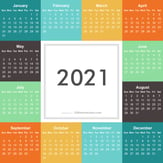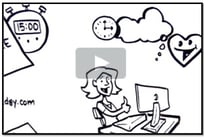 by Lynda McDaniel, Your Inspired Writing Coach, and People-OnTheGo Faculty Member
by Lynda McDaniel, Your Inspired Writing Coach, and People-OnTheGo Faculty Member
We all suffer from TMI these days—too much information makes us skim and skip as we read. That means in business writing, we need to grab our readers’ attention to keep them reading.
Try one or all seven of these easy ways to hook your readers:
1. Write from your heart. Writing has changed. Over the past four decades, the accepted style of writing has morphed from the stuffy corporate-speak of the ‘80s to the slap-dash texting of the 21st century. A good balance is somewhere in between—a style that is more conversational and personal—though still professional.
2. Tell tales. “Let me tell you a story.” That’s how the late Steve Jobs often started his presentations. He understood the power of story and used it to capture attention—even before he told the first story! Stories come in different shapes and sizes, from case studies and lengthy chronicles to similes and short anecdotes. Whatever form they take, stories captivate us, in part, because they take us out of our critical left brain so that we’re no longer on the sidelines listening—we’re right there with the storyteller.
 photo by Matt Yoshe (Creative Commons)
photo by Matt Yoshe (Creative Commons)
3. Tie your articles, reports, whatever you write, to current events. When you can, write about how your subject relates to what’s going on in the world. Is it in sync with or in opposition to a current trend? Does it offer a solution or an opposing view?
4. Practice. Writers love to tell this joke:
A writer and brain surgeon meet at a cocktail party. The brain surgeon sips his martini and says, “I’m planning to take next summer off and write a book.” The writer nods. “What a coincidence!” she says. “I’m planning to take next summer off and do brain surgery!”
Writing is a profession, just like being an engineer, doctor, or teacher, and it takes time to perfect. Keep practicing. Your writing will get better and better.
5. Observe. Remove those ear buds, take the bus, walk instead of drive, hang out where people buy your product or service, listen in the lunchroom, eavesdrop at cafés, go to a library, pay attention. You’ll be amazed at the anecdotes and inspiration you gain.
6. Capture your ideas. Carry slips of paper, buy a small (and refillable) notebook, or record on your cell phone. Don’t assume you’ll remember creative ideas and inspiring observations.
7. Think like your audience. Get out of your own head and get into the minds of your readers. If you’re writing to:
• Support staff: Make sure you know what they’re thinking, not what you want them to think.
• Clients: Survey them to get on their wavelength.
• Potential customers: Get back to “beginner mind” and write to them from that perspective.
And here’s a bonus tip: Read voraciously. Read writing that inspires you, and by osmosis, you’ll become a better writer. What a fun way to make your business writing stand out!
This blog is excerpted from Lynda McDaniel’s latest book, How Not to Sound Stupid at Work: 52 Writing Skills to Turn Ordinary Business Communications into Extraordinary Career Boosters.








 By Lynda McDaniel,
By Lynda McDaniel,  I was writing an article about Jeffery Robinson, a lawyer whose career was shaped by the Civil Rights Movement. He is kind, courteous, and caring, and I wanted to do him justice. That said, I also was eager to cross this assignment off my to-do list. I put the final touches on the article and asked a colleague to review it. She came back with the dreaded words, “You’re not done.”
I was writing an article about Jeffery Robinson, a lawyer whose career was shaped by the Civil Rights Movement. He is kind, courteous, and caring, and I wanted to do him justice. That said, I also was eager to cross this assignment off my to-do list. I put the final touches on the article and asked a colleague to review it. She came back with the dreaded words, “You’re not done.” What are your tips, strategies, and suggestions when writing your marketing and communications message? Do you use the art of storytelling in your presentations, sales copy, and other content?
What are your tips, strategies, and suggestions when writing your marketing and communications message? Do you use the art of storytelling in your presentations, sales copy, and other content? Did you know that only a fraction of the people who want to write a book ever do? Why?
Did you know that only a fraction of the people who want to write a book ever do? Why?

 Last week, I read an amusing essay in the New York Times about the increasingly popular use of exclamation points in business writing, especially e-mail and texts. BE—before e-mail—any serious writer wouldn’t consider using them unless the comments were truly, well, exclamatory: “I never!” or “Goodness gracious!”
Last week, I read an amusing essay in the New York Times about the increasingly popular use of exclamation points in business writing, especially e-mail and texts. BE—before e-mail—any serious writer wouldn’t consider using them unless the comments were truly, well, exclamatory: “I never!” or “Goodness gracious!”
